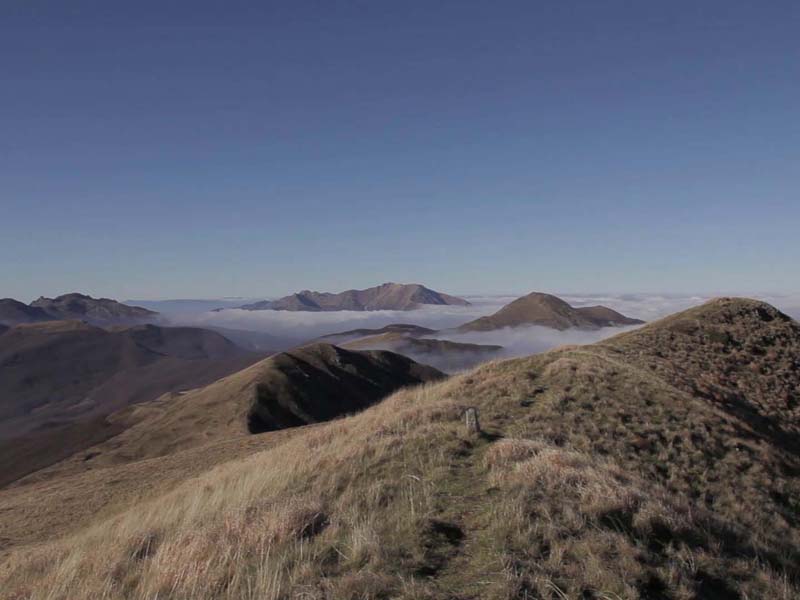Peaks
From everywhere in the Park you can see the peaks of the stunning ridgeline: Mount Cusna 2120 meters (6955 ft.), Mount Prado 2054 meters (6738 ft.), Alpe di Succiso 2017 meters (6617 ft.), Mount la Nuda 1893 meters (6,211 ft.), Mount Cavalbianco 1855 meters (6,086 ft.), Mount Ventasso 1727 meters (5,666 ft.) and Mount Marmagna 1851 meters (6,076 ft.).
Pania di corfino
Part of the Orecchiella State Reserve, Pania di Corfino is a massif located on the far eastern end of the Tuscan side of the Park. Pania di Corfino faces the Apuan Alps, who is a geologic relative of Pania di Corfino.
Pietra di Bismantova
Pietra di Bismantova is by far the most popular and noticeable landmark in the Park. In fact, its unusual shape has made it famous throughout history. Pietra di Bismantova - or Pietra as we call it in the park - is a geological formation (a quasi-cylindrical plateau) with steep walls that emerge as an isolated spur on the north side of the park. The top elevation is 1,047 meters (3435 ft.) and is a favorite destination among hikers and mountain climbers. If you look closely, you can see fossils nestled in its cliffs and from the top you can enjoy 360 degree views of the bucolic Apennines and Po River Valley.
Dante Alighieri, one of the greatest poets of world literature and "the Father of the Italian language," visited Pietra di Bismantova in 1307. He was clearly inspired by its unique formation as the Mountain of Purgatorio in the "Divine Comedy" closely resembles the Pietra, and he later mentioned it in Canto IV of Purgatorio.
Pietra di Bismantova has always been a sacred place, and is still today. At the base of Pietra you can find an ancient church of worship that is still frequented by the local community and travelers from abroad. For more information about the church at the base of the Pietra, see Churches.
Triassic Gypsum from Emilia to Tuscany: Poiano and Sassalbo
A striking outcrop of Triassic gypsum - 200 millions years old - runs across the park from north to south. In Poiano, where the outcrop meets the River Secchia, the river has deeply carved the vast chalk formations into the slopes of the hills, shaping a unique "prehistoric" landscape with several caves, sinkholes, and springs. In Sassalbo, where the Rosaro Stream meets the same Triassic gypsum outcrop, a stunning grey and white rock stands above the village of Sassalbo, whose name translates to "white rock."
The Triassic gypsum outcrop has extraordinarily unique features, some of which are the only in the world. In the caves of Poiano, there is a small crustacean that inhabits the caves and cannot be found in any other location on earth. The caves of Poiano are also internationally known in geology because of the highly complex water system of salty springs. The gypsum - chalk - changes color according to rain and light, and the view of the gypsum overlooked by the Pietra di Bismantova is truly breathtaking.For more information on Triassic gypsum, please visit www.lifegypsum.it/gypsum/index_uk.htm









